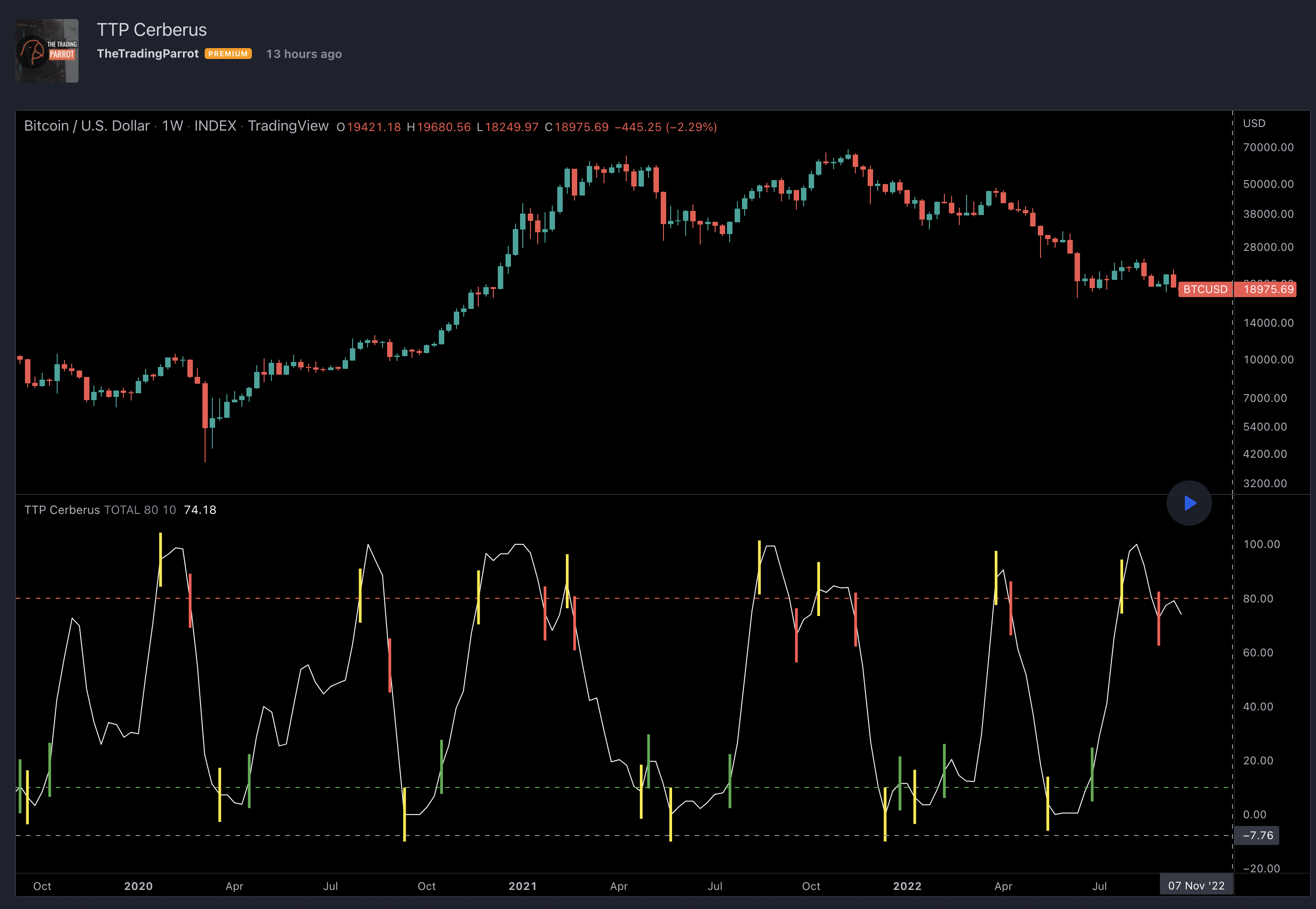When it comes to finding the best signals to time the market I know one thing. There’s not a single source of truth. You can look at the market from many perspectives to find your answers. It’s like if there were easter eggs hidden in many indicators and you just have to look at them from the right angle so the data turns into gold information.
We have done this multiple times using a variety of sources like divergences, inverse fisher transform applied to standard indicators like RSI or MACD, on-chain data like hash ribbons or active addresses, moving averages, futures and open interest data, trend lines, capitulation indicators like %R/nATR, pi cycle, drawdown, fib levels, double bottoms/tops, DXY, and the list goes on and on.
But there was a source that we never looked into before: the market cap of crypto vs the stable coins. Particularly how the funds are flowing back and forward. Using this information which is public and available on TradingView. For example “CRYPTOCAP:USDT” will give you the market cap of all USDT held and “CRYPTOCAP:TOTAL” will give you all crypto including BTC.
TTP Cerberus is an indicator that makes it easier to understand the stable coin vs crypto flows.
When the indicator tops it flashes a yellow small vertical line which crosses the horizontal red dotted line indicating a warning sell. Out of the 4 signals this indicator offers this is the most reliable one when used in the weekly chart.
The red signal flashes to confirm the warning sell which is why we call it sell signal.
There are also warning buy and buy signals but these ones are only reliable during the bull market. During bear market most rallies are short lived which is why I won’t use it until we think we are out of the woods.

Get access to Cerberus indicator
You can get access to the indicator by subscribing any TTP tier from Picnic.
You can request a 2 weeks trial by requesting access commenting in the YouTube video above including your TradingView account username (not email).